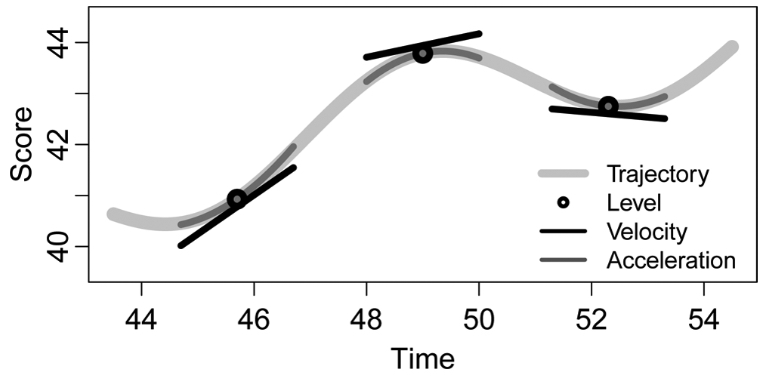A wide variety of models can be understood in terms of the level, velocity, and acceleration of constructs: the zeroth, first, and second derivatives, respectively. Conceptualizing change in terms of derivatives allows precise translation of theory into method and highlights commonly overlooked models of change. We introduce the language of derivatives.
Abstract
Matching theories about growth, development, and change to appropriate statistical models can present a challenge, which can result in misuse, misinterpretation, and underutilization of different analytical approaches. We discuss the use of derivatives: the change of a construct with respect to the change in another construct. Derivatives provide a common language linking developmental theory and statistical methods. Conceptualizing change in terms of derivatives allows precise translation of theory into method and highlights commonly overlooked models of change. A wide variety of models can be understood in terms of the level, velocity, and acceleration of constructs: the zeroth, first, and second derivatives, respectively. We introduce the language of derivatives, and highlight the conceptually differing questions that can be addressed in developmental studies. A substantive example is presented to demonstrate how common and unfamiliar statistical methodology can be understood as addressing relations between differing pairs of derivatives.
Citation
Deboeck, P. R., Nicholson, J. S., Kouros, C., Little, T. D. & Garber, J. (2015). Integrating developmental theory and methodology: Using derivatives to articulate change theories, models, and inferences. Applied Developmental Science, 19 (4), 217–231.
